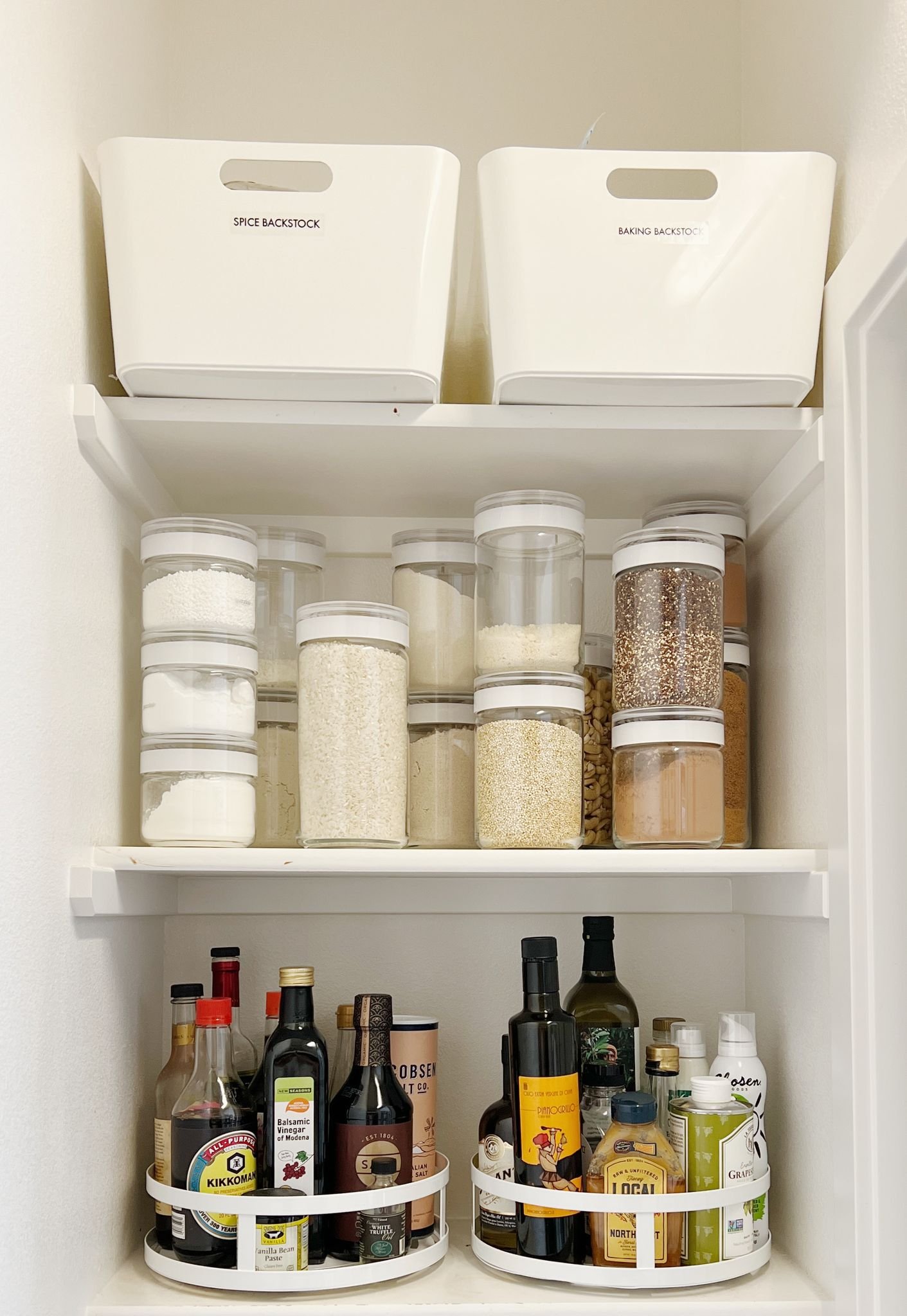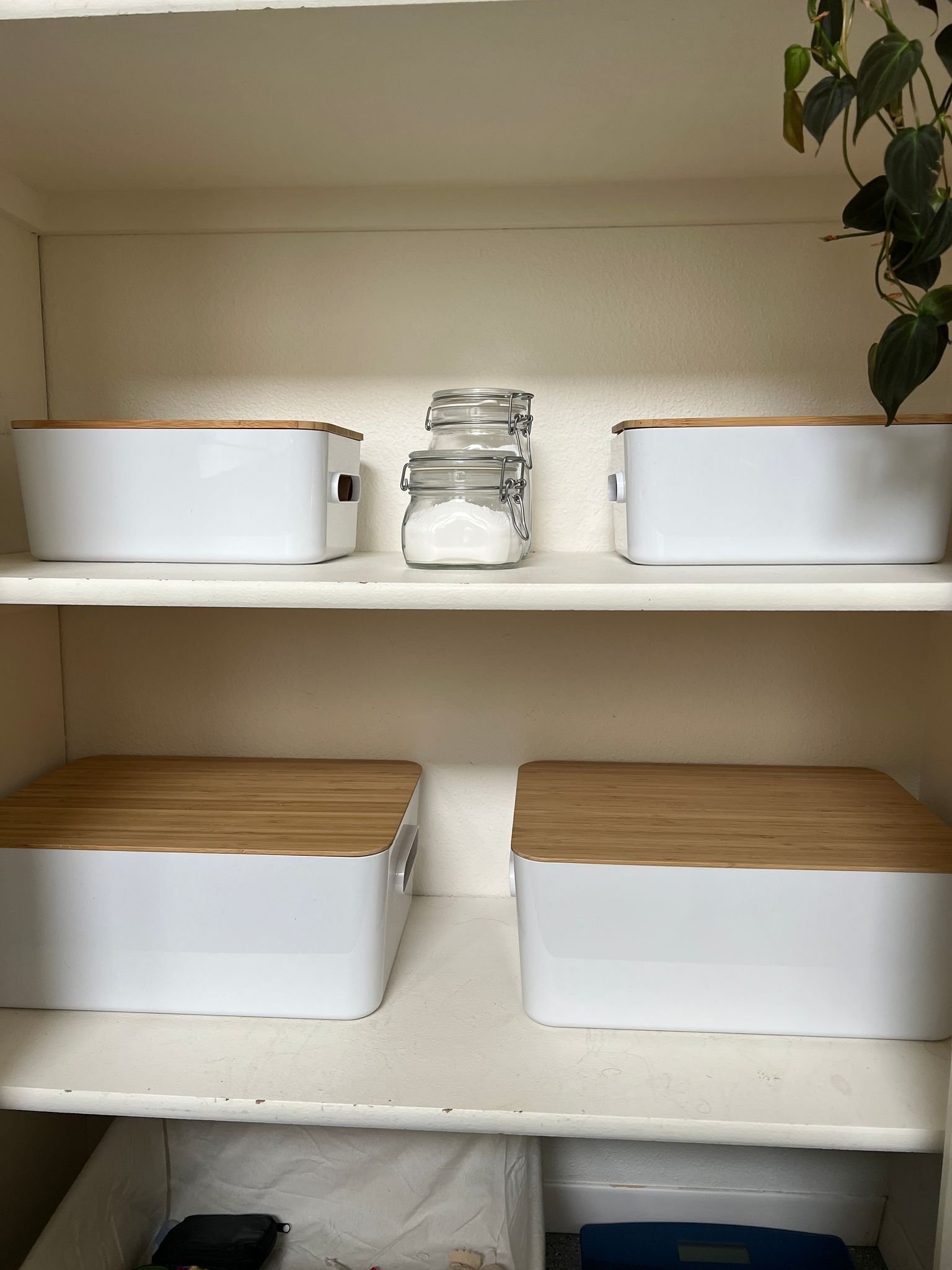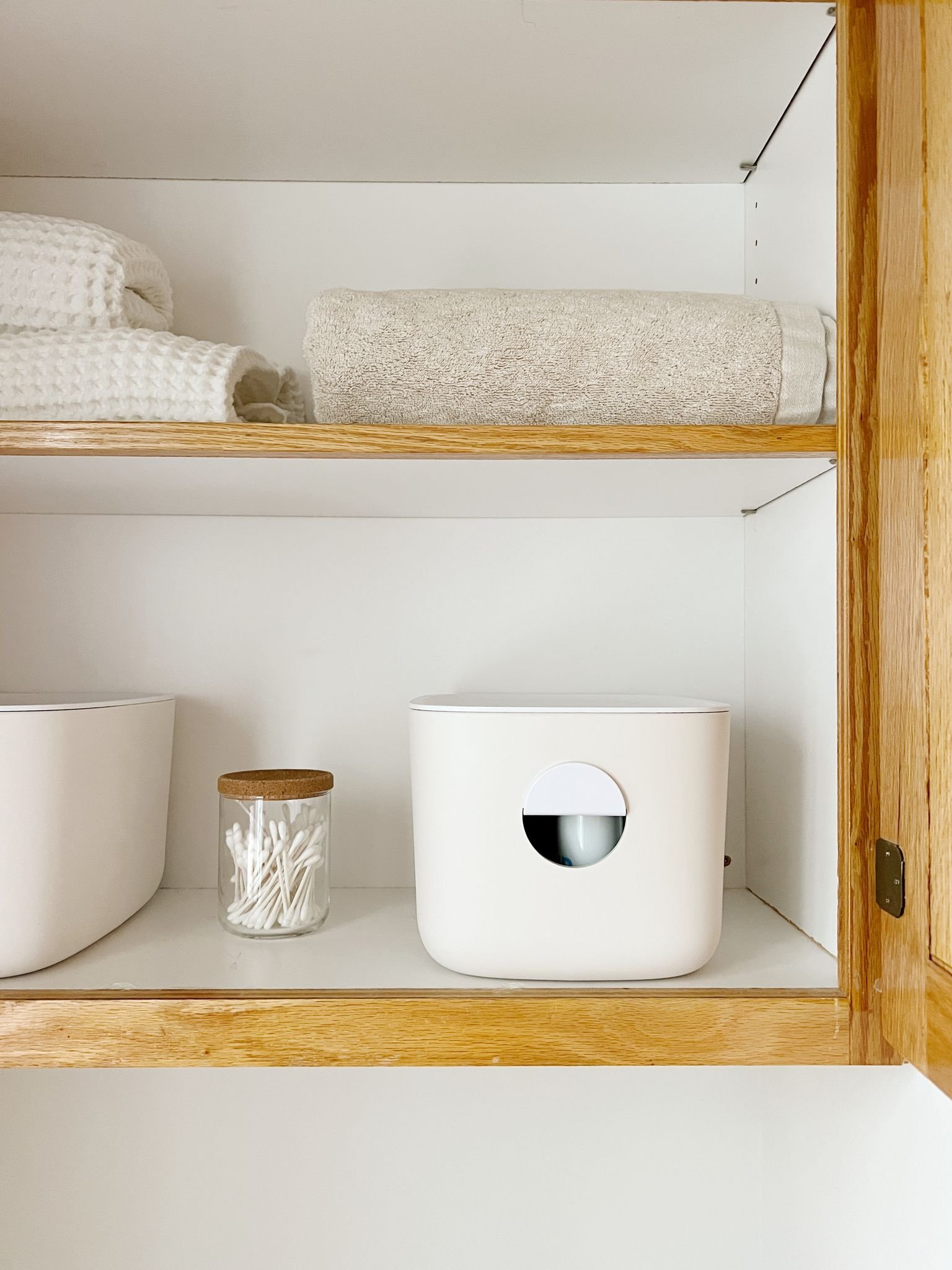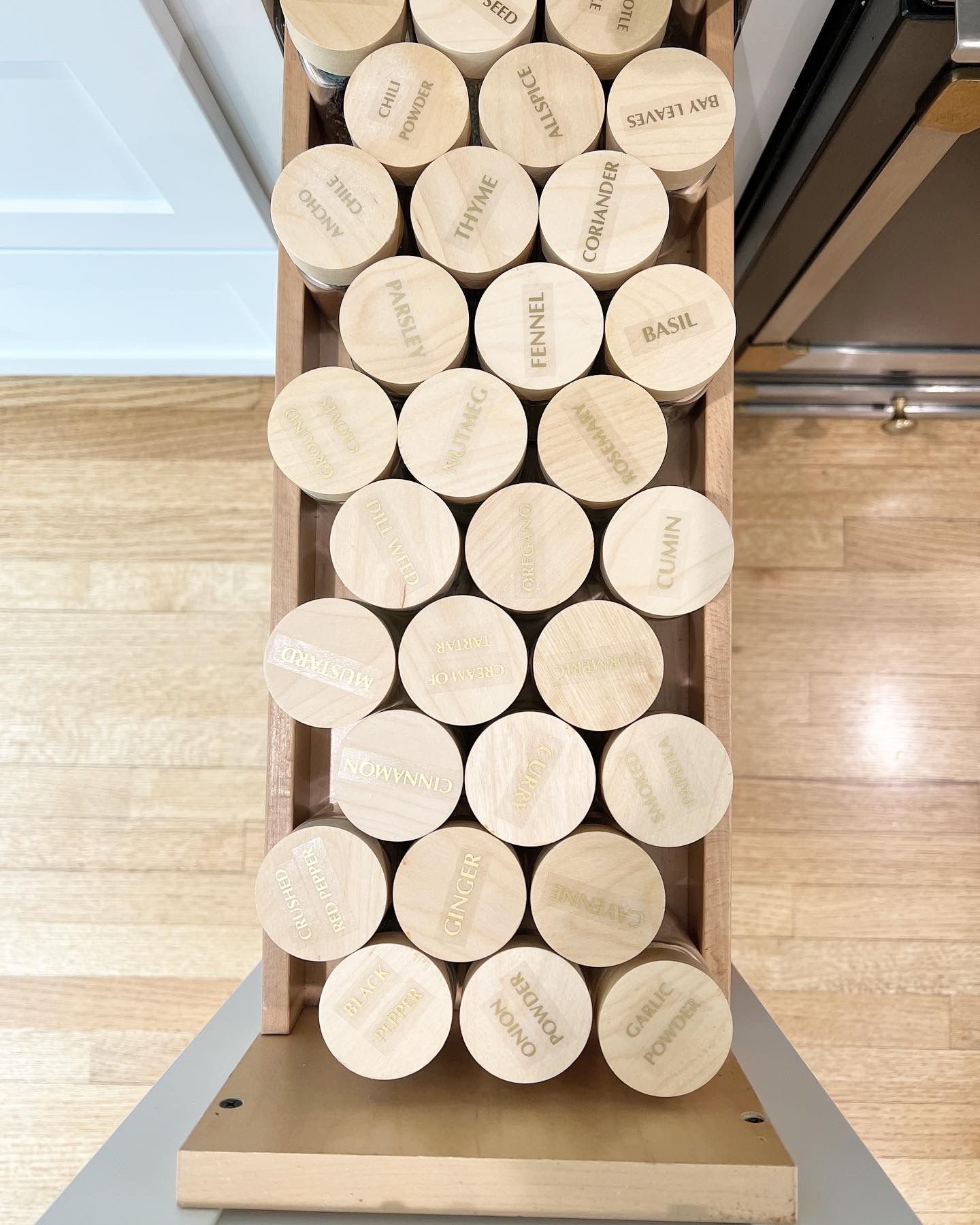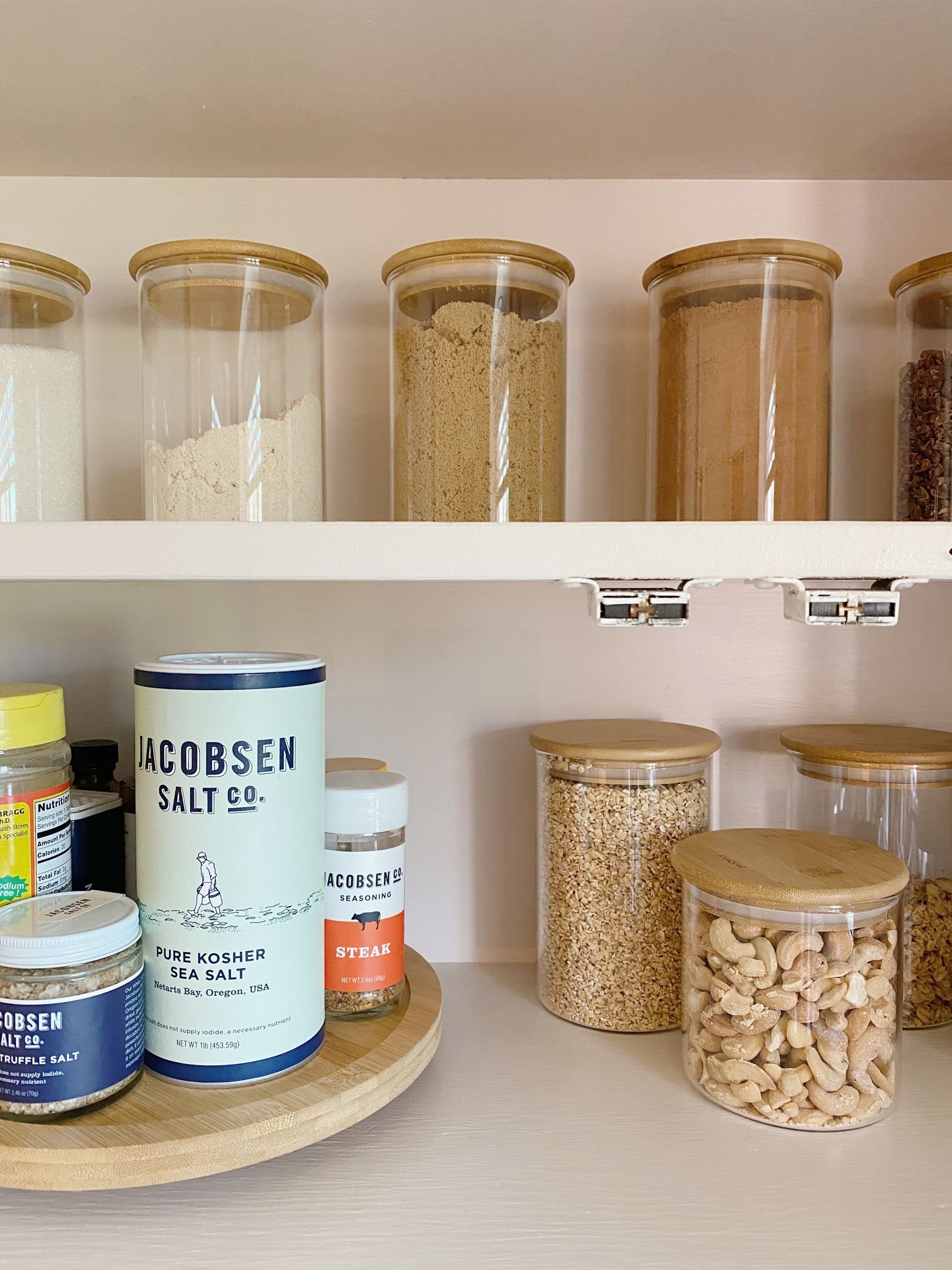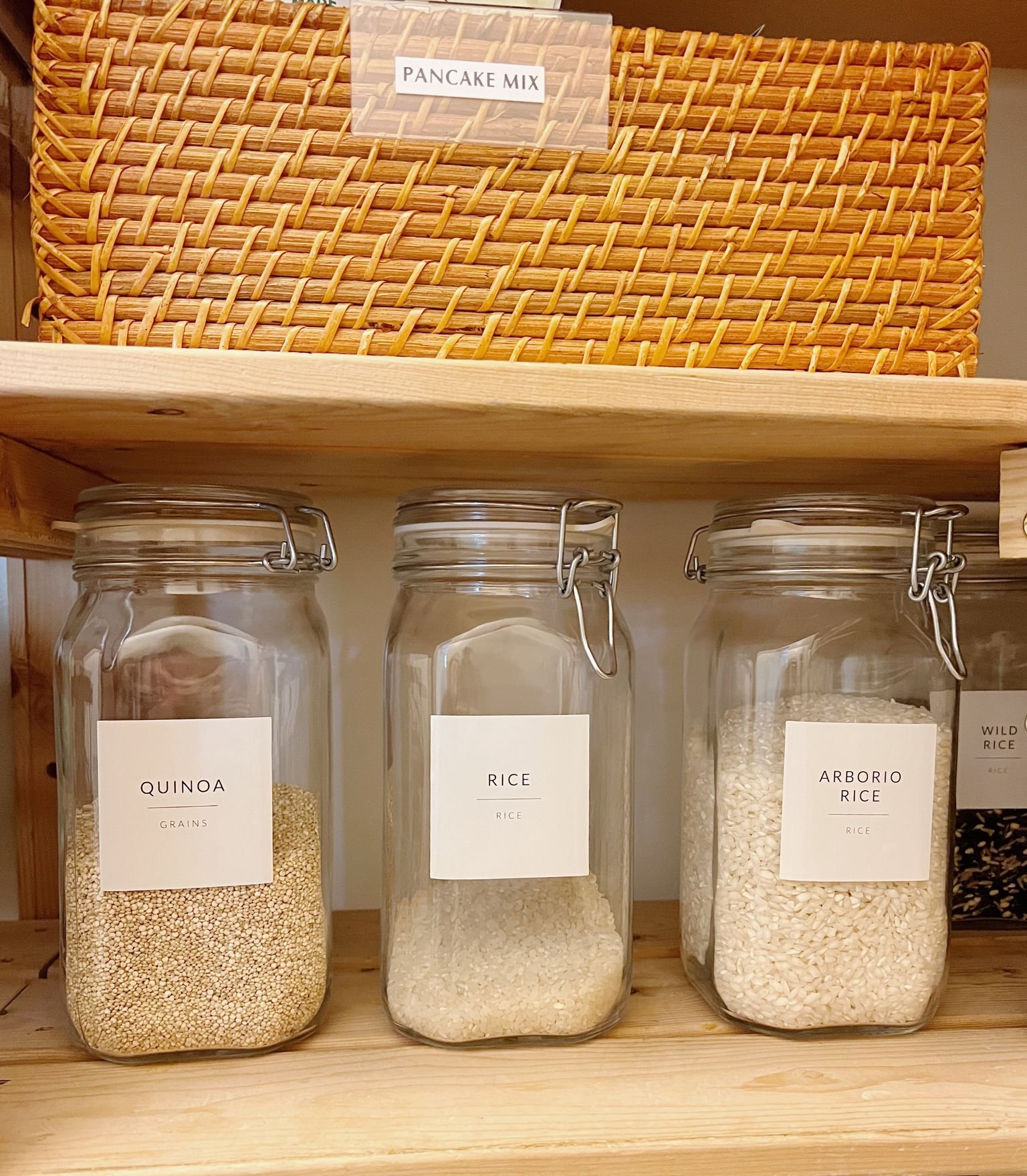4 Ways to Reduce Visual Clutter in Your Home
4 Ways to Reduce Visual Clutter in Your Home
We all know what clutter is, and let’s be honest—some of us are more closely acquainted with it than others. But did you know there is more than one type of clutter?
Here is the clutter definition most of us know: having excessive, oversized, or unnecessary items in a space. But clutter can also come from extra words, colors, and other stimuli in the form of labels and décor. This is known as “visual clutter.”
As this post will explain, visual clutter affects our brains and emotions in more ways than you might think. And while we can’t control visual clutter in spaces like the grocery store or the office, we can control our personal space. By reducing visual clutter in your home, you can create space for yourself to focus, do great work, connect, rest, and recuperate.
What is “visual clutter?”
The root word of “clutter” is “clot.” That’s right—as in, to stop of the flow of something. That’s why decluttering is Feng Shui 101.
In the user experience or “UX” design world, a webpage or program becomes a “cluttered visualization” when “the total cognitive load is too high.” A high cognitive load means that the information presented is too detailed, the viewer will perceive it as too complex, or both, which leads to difficulty, frustration, and overwhelm.
Similarly, your space can become visually cluttered if there is simply too much to take in. Words in particular contribute to this because your brain is constantly processing written language, even when you’ve seen it before.
How visual clutter affects the brain and body
Research shows that disorganization and clutter affects us in a number of alarming ways.
For example, a 2009 study revealed that mothers who lived in cluttered homes had high levels of cortisol, the stress hormone, and increasingly depressed mood throughout the day compared with mothers in less cluttered homes.
In 2016, another study found that participants were less capable of interpreting movie characters’ facial expressions when background clutter was present.
So whether you have a minimalist aesthetic or not, excessive clutter can cause:
Difficulty sleeping
Higher stress and anxiety levels
Depressed mood
Reduced ability to focus
Less productivity
Increased coping and avoidance habits such as eating junk food and watching TV
Reduced working memory
Poor physical health
Conversely, neuroscientists have discovered that clearing clutter at home and at work can increase your capacity for focus, information processing, and productivity.
Of course, certain groups may be more sensitive to visual clutter than others.
For neurodivergent people—including those with autism, anxiety, ADHD, and trauma—focus can be even more difficult. In one study, elementary school students with ADHD spent more time on-task in a test environment with little decoration than in an environment with disorganized and cluttered decoration. Participants without ADHD performed similarly, but with only slightly lower time on-task in the disorganized and cluttered environment.
For highly sensitive persons (HSPs), additional stimuli can contribute to information overload and overwhelm. I identify as an HSP. When there are too many words and colors and font choices in a room, all I see is visual chaos. I can handle it (that is my job as a professional home organizer, after all!), but I feel more centered when the items in a room are streamlined and simplified. This was true for me even before I got into home organizing.
That brings us to tips for reducing visual clutter in your space.
4 ways to reduce visual clutter
Here are a few ways to introduce modern minimalism to your home and visually declutter your space.
Remove labels
Labels can be a sneaky member of the clutter family.
Not only do many items carry labels, but many of those labels contain a lot of information. Most, if not all, of this information becomes unnecessary when you bring an item into your home.
Take this as permission to remove labels from things like perfume, deodorant, and soap. Trust me—you don’t need them!
Decant
When it comes to decluttering, I can’t recommend decanting enough.
Decanting is the process of putting an item in a reusable container designated for that specific purpose. This allows you to get rid of busy, all-over-the-place packaging and streamline your space.
Decanting can also save you money because you can buy items in bulk, decant what you need into your chosen container, and store the rest as backstock. Plus, decanting is one of the easiest sustainable switches you can make because simply buying in bulk cuts down on the overall use of plastic and other materials.
Try decanting the following items room by room:
Kitchen
Hand soap
Hand lotion
Dish soap
Dishwasher pods
Grains and baking ingredients
Olive oil—when decanting sensitive items like olive oil, it is best to use a container that protects the oil from heat and air as well as light (if you are storing it on your countertop).
Spices
Flavors and syrups
Laundry room
Laundry pods
Dryer sheets
Dryer balls
Baking soda
Bathroom
Hand soap
Hand lotion
Cotton balls or reusable fabric rounds
Q-tips
Shampoo and conditioner
Shower gel
Shave cream
Medicine, vitamins, and supplements—consider putting these items in uniform glass jars. That way, you can streamline your medicine cabinet or drawer and reduce the overwhelm that comes from looking at busy labels. If you need a reminder about the dosage, you can even add an instruction label to the bottom of the jar.
Bath salts
After you have decanted your items, you can label each container on the top, side, or bottom depending on functionality and what feels better to you. Here are two spice collections—one is a drawer collection with labels on the top, and the other is a shelved collection with labels on the side:
You can also put labels on the bottom of containers. Check out the difference between grain containers with and without labels:
I selected many of the above items from The Container Store Portland, but you can find jars, cannisters, and minimalist Tupperware just about anywhere. Here is a list of my favorite products to get you started.
Need even more storage ideas? Check out my Pinterest page!
Use photos as labels
You can take words out of the picture entirely by labeling with photos, like this.
Photo labels are especially helpful for hard-to-name items like shoes, collectibles, outdoor gear, and hardware. They also work well for kids’ stuff, especially when your kids are under reading age. Photo labels help kids sort toys and other items by color, size, and type all on their own.
With Instax, you can take a sticky-backed polaroid-like photos that you can easily adhere to most baskets, bins, and boxes.
Choose less stimulating décor
Another way to visually declutter your home is to choose less stimulating décor.
If you have artwork or other wall hangings that display words or busy scenes, think about what drew you to it in the first place. Are you still at that place in your life? Try taking it down for a week and see how it makes you feel. If you love it, or if it is meaningful to you, then by all means keep it. But if you don’t love it, try selling or donating it.
Embrace the new, clear space or replace it with something that is more personal and brings you calm. This could be something you or a loved one created, work by an artist you admire, a photo, or an abstract print.
You could also hang something useful like a chart of flavor profiles or seasonal vegetables, or a command center you and your family can collaborate over (I recently purchased a glass whiteboard like this). Or, if you are familiar with the Brené Brown parenting manifesto, consider creating your own family manifesto outlining the values that are important to your family.
Visual decluttering is not about having no words or stimuli in your space, it’s just about inviting intentionality and limiting the items you see every day to things that are meaningful and useful.
Creating more space in your home and your mind
Clearing things out of your physical space and organizing what is left creates more room for your mind and body to operate in.
The world can be overwhelming. Think about ow many words we already take in per day—from texts and emails to social media to advertisements, we are constantly swimming in a sea of information.
Anything you can do to limit the amount of information your brain has to process on a constant basis can help you focus when you need to and relax when you don’t. And by creating a sanctuary for your mind and your spirit, you can better protect your energy in your home and beyond.
Need help with visual decluttering?
Visit this page for a list of services I offer. To set up a complimentary consultation with me to discuss your visualizing, minimizing, and organizing goals, simply fill out this form.
Not ready to work together yet? Check out the modern minimalist method workbook for more info as well as journal prompts, exercises, and resources. For digital decluttering specifically, download my free digital declutter checklist.
Happy decluttering!

